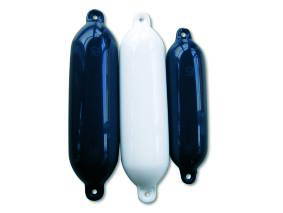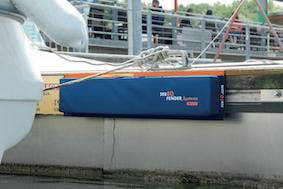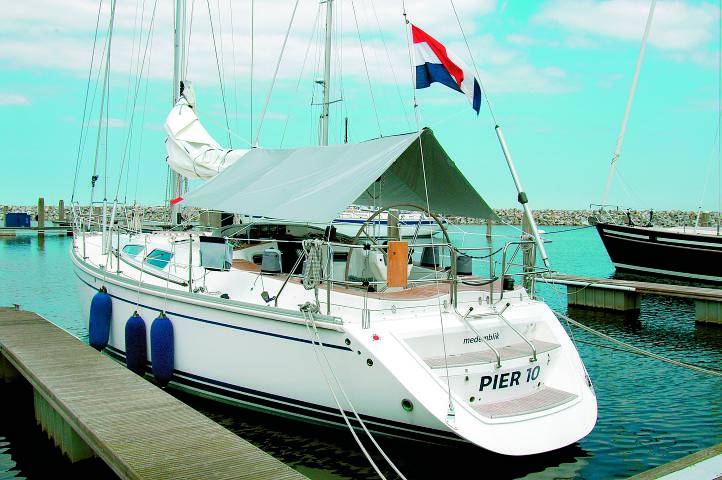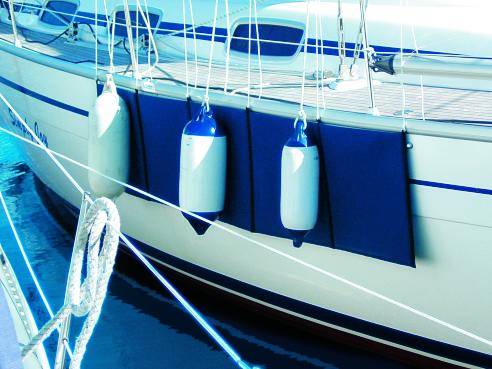Boat fenders: How to make the right choice
You want to optimize your fixed mooring for the boat with a few tips and tricks? We will show you what options are available and how boat fenders can be optimally used. Because boat fenders are an integral part of the basic water sports equipment and should not be missing on any boat.
The most common boat fenders are so-called long and ball fenders. At the same time, fenders are available in all possible sizes, colors and shapes, so that many a boat owner is overwhelmed by the choice when buying them. But what are boat fenders anyway, why do you need them and how do you find the right boat fender?
long fender
Long fenders are also called "roller fenders" and characterize the typical image of a boat currently in port. These are available in different sizes and can be used individually. The standard model is long, tubular and has reinforced fasteners at both ends to attach the fender line to the railing.
Boats with a high freeboard in particular should be equipped with long fenders, as the hull area is then better protected in swells. The clear advantage of long fenders is that they are easy to handle. In addition, it can be unrolled from the side of the boat. If a second rope is attached, the long fender can even be used as a transverse fender.
However, it is then no longer possible to unroll the fender, which can lead to increased scratches. If you want to extend the durability of the fenders, you can also use fender covers. These protect the fenders from the UV rays of the sun, which often make the material brittle or fragile.


ball fender
Ball fenders can be better unrolled along the ship's side due to their round shape and are therefore particularly suitable for mooring. Handling is also very simple here. The damping effect is significantly higher than with long fenders, as the ball fender has more volume.
Due to the wide cross-section, ball fenders can be optimally unrolled even under pressure. Therefore, they are used especially when maneuvering or mooring. Ball fenders are becoming increasingly popular as buoys, especially for large motorboats with a concave bow and due to their bright orange color. With the bright color, ball fenders ensure good visibility in the water - even in cloudy weather.
flat fender
Flat fenders are also known as "fender cushions" or "cushion fenders". They are so called because they are often used as seat cushions after hauling in. Flat fenders are easy to stow on the boat and therefore offer advantages in handling, especially for small boats. In addition, they do not slip easily and offer protection over a large area due to their shape.
When launching the boat, flat fenders are ideal because they do not slip and cover the largest possible area of the boat. Flat fenders consist of foam and a cover, which is often made of nylon. The disadvantage, however, is that they cannot be unrolled due to their design. In addition, they are not as robust and lighter than other types of fenders, so that the flat fenders can be blown away even in a strong breeze.


web fender
Jetty fenders and dolphin fenders are considered simple ways to protect the boat from damage. They are firmly attached to the berth and can be bolted to the wooden pontoons. There are either inflatable jetty fenders or fixed foam fenders available in the market. Depending on the design, these can be purchased as straight, short or square jetty fenders.
Other shapes such as stair, stern, bow, ring or anchor fenders provide additional protection for your boat.
Frequently asked questions - FAQs
What is a boat fender?
A boat fender is an inflatable protective body that serves to protect the boat from damage.
What types of fender are there?
There are long fenders, ball fenders, flat fenders and web fenders, which differ in their shape and handling.
What is the right number of fenders?
If the boat is less than ten metres long, at least two fenders are recommended. If the boat is longer than ten metres, at least three to four fenders are recommended on each side.















